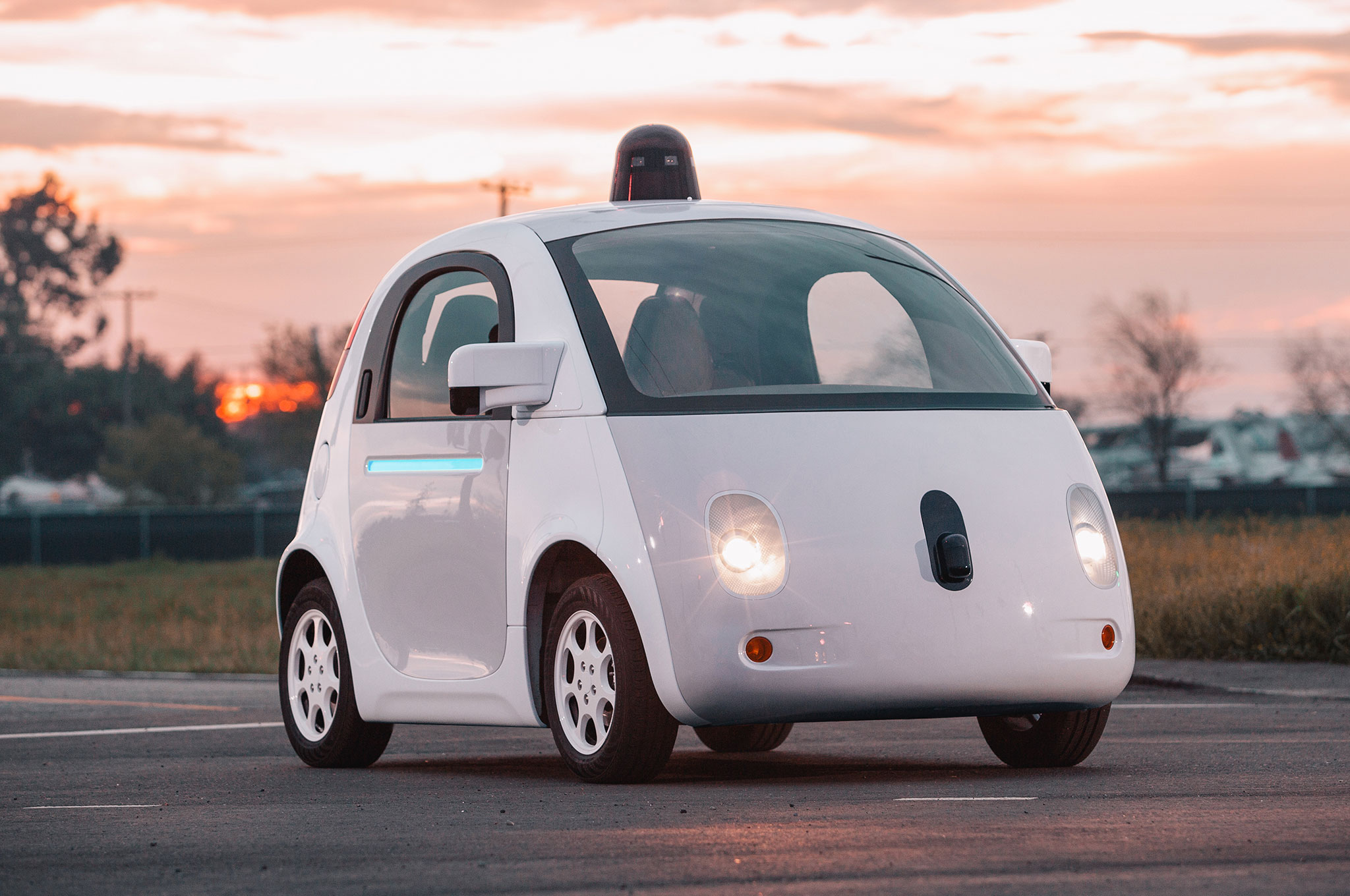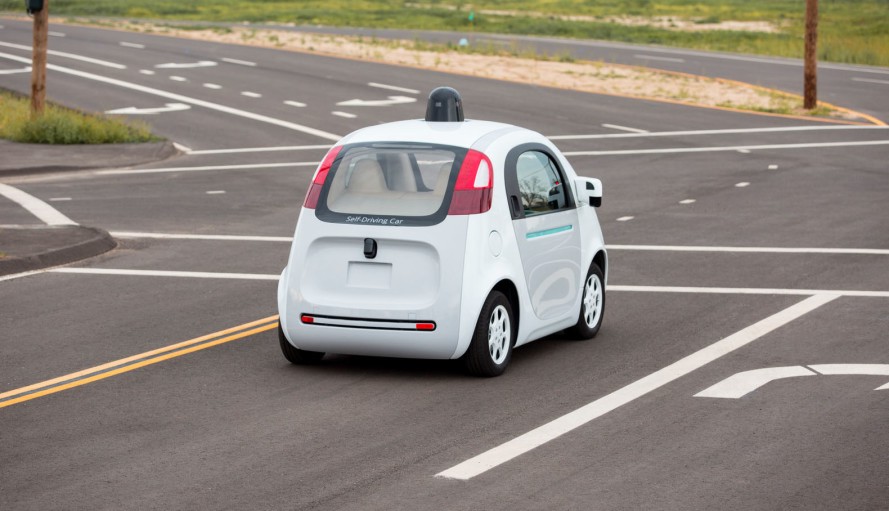
How do you convey the magnitude of something that sounds, to most people, like science fiction? By referencing science fiction of course.
The last time anyone saw a self-driving car was probably in the 2004 film iRobot. Will Smith’s character Del Spooner, a gruff, anti-technology detective who doesn’t trust anything with circuits, decides to drive manually at speeds that should only be attempted by a computer. His co-star Dr. Susan Calvin, played by Bridget Moynahan, scolds him for being so reckless. The film is set in the year 2035.
What’s striking about that scene is that even when making a movie about what almost becomes the robot apocalypse, the filmmakers couldn’t fathom a driving scenario more advanced than one where human beings are still the primary vehicle operators. Keep in mind, the film was released over ten years ago. Today, what once seemed farfetched enough to be featured in a film that predicts how technology will take over the world, is about to become a reality in 2016.
“I look back at the 20th century on how vehicles changed the everyday lives of individuals. In this century, autonomous vehicles will have an impact of equal magnitude, on everything we do,” argues Barrie Kirk at Planning the Next Disruptive Technology conference on Tuesday.
Kirk is the executive director of CAVCOE, the Canadian Automated Vehicle Centre of Excellence. He’s spoken at event after event on this subject, including a Future of Four Wheels Transportation panel at Ryerson University’s Digital Media Zone in February. He’s completely grey, and his accent reveals him as being from the U.K., where he received his designation as a Professional Engineer.
Today, the self-driving car has many names including autonomous vehicle, automated vehicle technology, driverless car, and even just AV, as they’ve become known to the regulars at these conferences.
Kirk’s basic argument echoes that of every other speaker on the panel today. Yeah, we could just open the door and let self-driving cars in, but why not use them to our advantage along the way? The question on everybody’s lips is, how long should we wait to get started?
“Let’s say that by 2030, the data is in and we know that computers are better drivers than silly, stupid humans. Is it really ethical to allow humans to cause all that carnage on the road?” asks Kirk in response.
He goes on to argue that when a full penetration of autonomous vehicles is achieved, societies may very well see an 80 percent drop in vehicle collisions. He adds that over half of citizen interaction with the police is traffic related, meaning that self-driving cars could free up law enforcement to deal with other issues more thoroughly.
Self-driving cars pose a whole slew of benefits to the individual. In a lot of ways, self-driving cars mean a better world for you and for me. However, the changes won’t stop there.

His bottom line? There’s no time like the present. Where it becomes controversial is that he suggests an Adam Smith-inspired strategy to make Canada a leader in this space is to let the private sector develop without government intervention; basically, keep the law out of it.
At this point, the energy in the room shifts and a panel discussion ensues. Government representatives from both the City of Toronto and the Province of Ontario straighten their ties and prepare to convince the now eager listeners to ignore that last point.
The brains of the operation at the City of Toronto is a man by the name of Stephen Buckley. A slight man who talks a mile a minute, he takes the podium and clears his throat.
“I think we have an opportunity here.” He says. “From a municipal standpoint, what really scared me was this.” He throws a picture of Google’s self-driving car up on the screen.
He goes on to say that they planned to build the product from top to bottom. From the hardware to the software, Google stood to control the technology and everyone else who wanted to use it. The price probably wouldn’t be too outrageous because, in his words, “They have more money than God.”
After seeing in 2008 an image of an automated version of a Toyota Prius built by Google, Buckley went to work. Just this past February, he debuted the findings of his research team, based out of the University of Toronto, to a meeting of over 40 City of Toronto division heads.
The finding showed that one of three scenarios would likely come to pass. The first, is simply an extension of the private ownership model. Regular cars are simply replaced with autonomous vehicles and not much else changes.
The second scenario depicts a complete shift in the way Canadians think about mobility and vehicle ownership. He calls this model “mobility as a service,” which will see a conversion from private vehicle ownership to vehicle sharing companies like Uber and BlancRide. In this scenario, almost no one owns or feels the need to own their own car.
In addition, transportation as a service stands to add an extra $65 billion per year to the Canadian economy and save the average family $3,000 per year.
The third scenario, which he stated was probably the most likely, is a mix of private ownership and mobility as a service.
“Overtime, this may transform mobility as we understand it. It may impact how we build, design and operate cities.”
He understands that new and disruptive technology will likely invoke a “winner takes all” mentality among private companies. His argument is that the public sector needs to act soon, or other parties will act first. In an effort to do just that, the Ministry of Transportation opened up Ontario streets for testing autonomous vehicles this past January.
Buckley goes on to argue that self-driving cars will have a different impact depending on which location they’re placed in. “There will always be people who want to own their own vehicle, but urbanites might not be interested in owning as much,” he said. Either way, he says, regulators need to inform themselves of this fast-approaching trend.
Autonomous vehicles are coming, that part is clear. However, sitting around the table are some extremely different ideas for implementation. Buckley concludes his presentation by asking, “how do we harness AV technology to get the city we want?”
Whereas those opposing him ask, can something so disruptive be harnessed?
Related Reading: Ontario first in Canada to begin testing self-driving vehicles on public roads
MobileSyrup may earn a commission from purchases made via our links, which helps fund the journalism we provide free on our website. These links do not influence our editorial content. Support us here.


